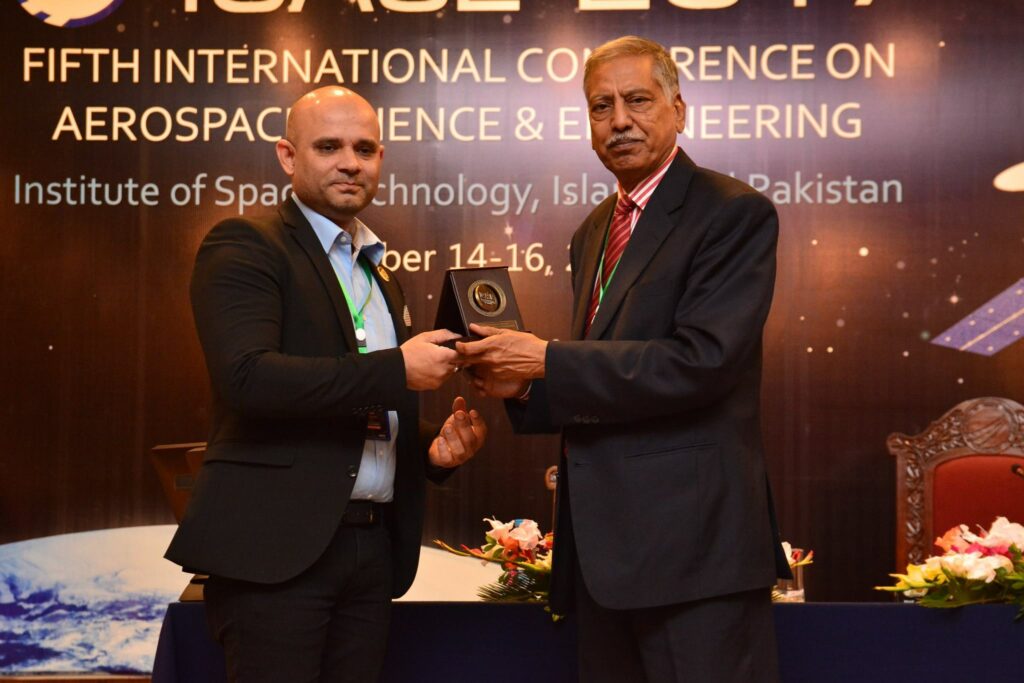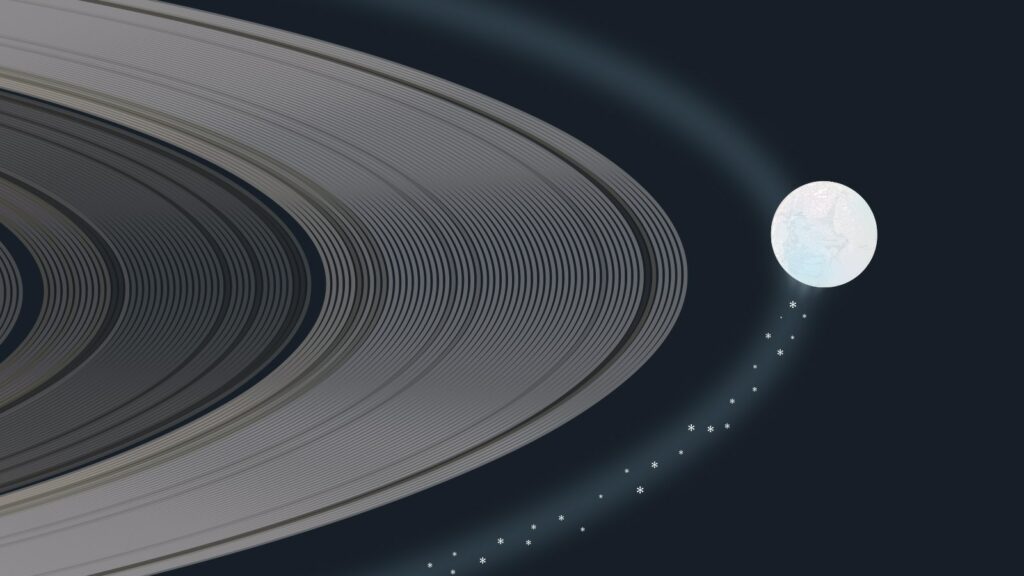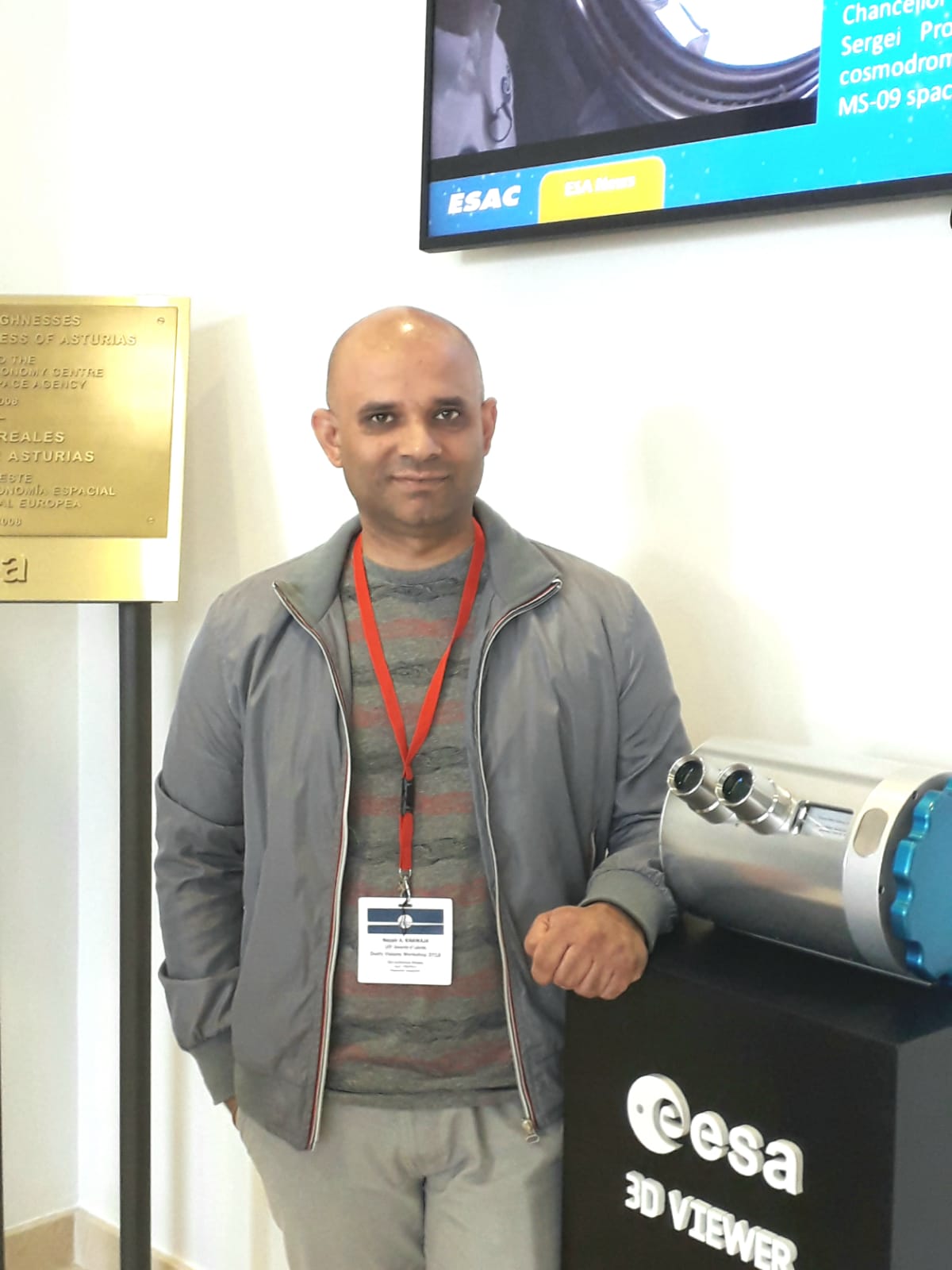A Pakistani scientist, Dr. Nozair Khawaja, led breakthrough research on Saturn’s moon Enceladus, which got published in the Monthly Notices of Royal Astronomical Society and Oxford Academic. Dr. Khawaja is a Wazir-Abad based planetary scientist working at Free University Berlin. The research Co-led by Dr.Frank Postbrg and Mr. Fabian Kllener.

Abstract
Enceladus is one of the most exciting objects in the Solar System. It has a subsurface liquid water ocean, which is in contact with its water-percolated hot rocky core. It emits the ocean material from the depths of its subsurface ocean into the outer space in the form of plumes of water vapor and ice grains. Last year, a team of international scientists, co-lead by Dr. Nozair Khawaja and Prof. Dr. Frank Postberg, discovered highly complex and large organic compounds that emerged from Enceladus hydrothermal core [1]. It was the very first time that such large and complex organic molecules were found in any of the extraterrestrial ocean worlds.
Now a team of scientists, under the supervision of Dr. Nozair Khawaja of Free University Berlin, has found small, soluble and reactive oxygen and nitrogen-bearing organic compounds that also emerged from the depths of Enceladus hydrothermal vent and detected in the ice grains ejected out from Enceladus. The significance of this reactive oxygen and nitrogen-bearing compounds is that such organics are known precursors/ingredients to synthesis biologically-relevant organic compounds, like amino acids, in Earth’s hydrothermal system. Here, it should be noted that no amino acids in Enceladus Ocean were found yet, but finding ingredients of biologically-relevant organic compounds has once again proven Enceladus a potentially habitable world.

Who is Dr. Nozair Khawaja?
Dr. Nozair Khawaja was born in Wazirabad and completed his Master’s degree in Astronomy and Space Sciences from the Punjab University. Later on, he did Ph.D. in Geosciences from Heidelberg University, Germany. He also worked as a postdoc scholar at the Institute of Earth Sciences, Heidelberg University and is currently working in Free University, Berlin.
Dr. Khawaja did his research on life beyond Earth and has now become a leading researcher on many space exploring programs within our solar system. In 2019, he got Group Achievement Award for Cassini’s Cosmic Dust Analyzer from National Aeronautics and Space Administration (NASA).
He is a recipient of the first prize of the Horneck-Brack Award, at the European Astrobiology Network Association in 2018. He has also received the Short Term Scientific Mission (STSM-2010) Grant from European Cooperation in Science and Technology, ECOST – action chemical cosmos. His work has appeared in highly cited peer review journals like Nature, Journal of Royal Astronomical Society, and Science.
Enceladus – Saturn’s Ocean World
Five mid-sized Saturn’s moons Mimas, Enceladus, Tethys, Dione and Rhea orbit within Saturn’s E ring, beyond the main ring system. These are nearly spherical moons and have relatively low density and high albedo. The interiors of these moons are made up of water ice surrounding a small silicate core, whereas the surfaces are composed mainly of water ice.
All surfaces of moons in the E ring, except Enceladus, are dominated by impact craters and have been considered as geologically inactive for billions of years. The high albedo and relatively young un cratered geology of wide areas on Enceladus was discovered during Voyager Saturn flybys. In 2004-05 Cassini performed a number of flybys of Saturn’s icy satellites.
Clearly, the most spectacular discovery was the geological activity near Enceladus’ South Pole. An anomaly in the magnetic field near Enceladus observed by the Cassini Magnetometer in February 2005, led to a closer flyby to investigate the phenomenon. On 14 July 2005 Cassini performed a flyby of Enceladus with the closest approach of ~ 168 km from the moon’s surface. The onboard Cassini’s Imaging Science Subsystem (ISS) acquired images of Enceladus’ South Polar Terrain (SPT) and discovered jets of icy particles emitting from 135 km long fractures, situated at ~ 55°S latitude. The Composite Infrared Spectrometer (CIRS) aboard Cassini pointed out endogenic activity from SPT. The CIRS instruments detected 3 to 7 gigawatts of thermal emission from the SPT centered on the four linear stripes, the so-called “tiger stripes”.
Note
This is a press release from the Astrobiology Network of Pakistan (ABNP). Dr. Nozair Khawaja is the Founder of ABNP and has been working on NASA’s historic space Cassini Mission. Dr. Khawaja is involved in the Japanese future space mission, Destiny Plus and is also associated with NASA’s exciting Astrobiological space mission – Europa Clipper.
References: [1] https://www.nature.com/articles/s41586-018-0246-4


